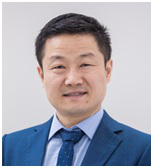
Time:5th March,2018 ,10:00 a.m � 11:00 a.m
Place: Room 343, Western 7th Teaching Building,Xixi Campus (Photonic materials and devices research room)
Inviter:Prof. Jianrong Qiu,Prof. Xiaofeng Liu
Speaker:
Distinguished Professor JIN, Dayong
University of Technology Sydney
Email: dayong.jin@uts.edu.au
Dayong Jin, Dean of the biomedical materials and Instrument Research Institute of University of Technology Sydney, Australia, ARC Research Hub for Integrated Device for End-user Analysis at Low-levels. As a corresponding author,he has published nine articles in nature and sub journal in the last three years(Nature 2017, Nature Nanotechnology 2013, Nature Photonics 2014 and 2018, Nature Communications 2014 and 2016, Light: Science & Applications 2016 and 2018), and an inviting review (Nature Nanotechnology 2015). At the same time, he is also the inventor of six international patents. With his outstanding achievements in interdisciplinary research, he won the Eureka Prize for Interdisciplinary Innovation, Australia's highest national scientific research award in 2015. He is also one of Australia's 100 leading technological innovators in 2016 and the winner of the John Booker Medal of the Australian Academy of Sciences Engineering Science Award in 2017. In October 2017, Professor Kim Dayong won the Australian Prime Minister Award as the first Chinese scientist - Malcolm McIntosh - Character of the Year
Distinguished Professor Dayong Jin directs the Australian Research Council IDEAL Research Hub and Institute for Biomedical Materials & Devices (IBMD), at the University of Technology Sydney. His research has been in the physical, engineering and interdisciplinary sciences. He is a technology developer with expertise covering optics, luminescent materials, sensing, automation devices, microscopy imaging, and analytical chemistry to enable rapid detection of cells and molecules and engineering of sensors and photonics devices. Prof Jin is the winner of the Australian Museum Eureka Prize for Interdisciplinary Scientific Research in 2015, the Australian Academy of Science John Booker Medalist in 2017, and the Prime Minister’s Malcolm McIntosh Prize for Physical Scientist of the Year 2017.
Abstract :
Upconversion nanoparticles have found numerous applications, based on their tunable photo-physical and chemical properties. My talk will summarize our recent contributions to the field by discovering a new library of super dots using the state-of-the-art nanophotonic tools for single particle studies. We emphasize that nanophotonic characterization of single fluorescent nanoparticles is the key in discovery of new physical properties of and translating the new nanomaterials into novel applications. Possibilities and challenges in development of high performance fluorescent nanomaterials/hybrid nanostructures, high horizontal characterization techniques, and ongoing trend towards biophotonics and nanophotonics applications are discussed.
Our Key Papers:
[1] Zhao J, et al, Nature Nanotechnology, 8, 729-734 (2013),
[2] Lu Y, et al, Nature Communications, 5, 3741 (2014),
[3] Lu Y, et al, Nature Photonics, 8, 32-36 (2014),
[4] Zhou B, et al, Nature Nanotechnology, 10 (11), 924-936 (2015)
[4] Liu D, et al, Nature Communications, doi:10.1038/ncomms10254 (2016),
[5] Liu Y, et al, Nature, doi:10.1038/nature21366 (2017)
[6] Wang F, et al, Light: Science & Applications, doi: 10.1038/lsa.2018.7 (2018)
[7] Zhou J, et al, Nature Photonics, doi:10.1038/s41566-018-0108-5 (2018)



